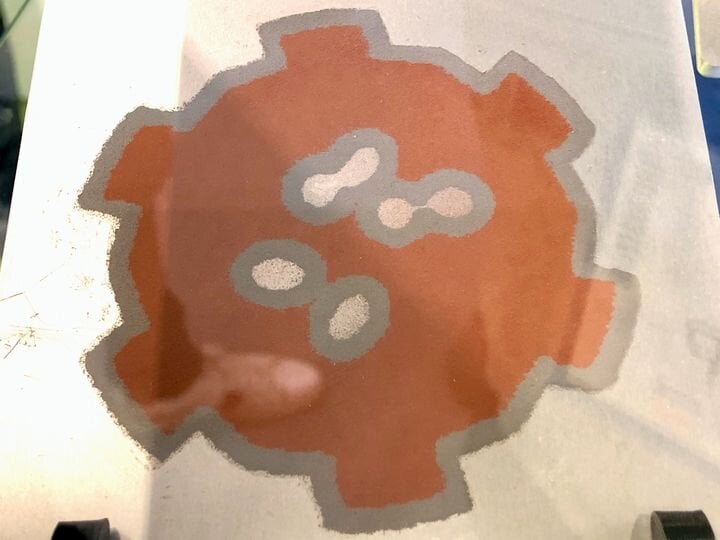
Aerosint has been purchased — again.
The Belgian startup company was formed in 2016 and has developed a unique 3D printing process they call “Selective Powder Deposition”, or SPD.
It’s a powder-based process, but with a difference: they can use multiple materials in each print job.
This is quite unlike virtually all other powder-based systems, which typically have a large blade to spread out a new layer of mono-powder for processing. Aerosint’s process doesn’t do that, and their powder deposition method is capable of putting different powders in specific positions on the print surface.
The result of this approach is that objects can be printed in powder with multiple materials. The possibilities are endless, and will greatly simplify production: instead of assembling parts made with different materials, the entire piece can be printed as one.
As a startup, Aerosint had limited resources. In fact, they had not produced a 3D printer themselves, just the process. Their plan was to integrate the technology into other devices.
Then in 2021 the company was acquired by Desktop Metal. At that time “DM” was quite busy scooping up other companies and their printing processes, such as EnvisionTEC and ExOne. Aerosint’s purchase made sense as DM broadened their technology profile.
Now it’s been announced that Desktop Metal has sold Aerosint to Schaeffler Group.
What is Schaeffler Group? It’s a large German company founded in 1946 that produces automotive and industrial products, originally and still primarily bearings.
Now they’ve acquired a powerful 3D printing process via Aerosint. How will this work going forward? Aerosint explained in a LinkedIn post:
“Joining Schaeffler will indirectly give Aerosint access to an extensive network of over 85,000 global resources.
Undoubtedly, the wealth of expertise within this network will play a pivotal role in propelling Aerosint’s technological advancements to unprecedented heights. Teaming up with the Schaeffler Group also means we’ll have a wide range of new applications to explore, strengthening our dedication to showcasing the exciting potential of multi-material Additive Manufacturing.”
Schaeffler wrote:
“Additive manufacturing is simpler than conventional manufacturing processes when it comes to producing components with complex geometries. A key enabler of Industry 4.0, it also offers a number of sustainability benefits, including reduced material consumption, greater energy efficiency in production, and material options that are more environmentally friendly. The startup will be renamed “Schaeffler Aerosint SA” and integrated into the Schaeffler Group as an additional location for Schaeffler Special Machinery.”
This seems to suggest that Schaeffler will be making much more extensive use of AM in the future, potentially with an expanded version of SPD from Aerosint.
But why did Desktop Metal sell of one of their most recent acquisitions? It’s also somewhat coincident with the ending of the proposed merge with Stratasys, so this move could be part of their post-Stratasys strategy.
While terms of the deal were not made public, Desktop Metal clearly will gain significant financial benefit. However, they’re not totally out of the picture. Desktop Metal CEO Ric Fulop explained:
“With Schaeffler, we have an international partner with a high level of technology expertise and clear roadmap for commercializing the SPD technology with laser-based systems. We will continue to collaborate on the various possibilities for using this technology in Desktop Metal binder jetting systems in the future.”
It seems that Desktop Metal may benefit in other ways by partnering with Schaeffler.
Via Aerosint, LinkedIn and Schaeffler
